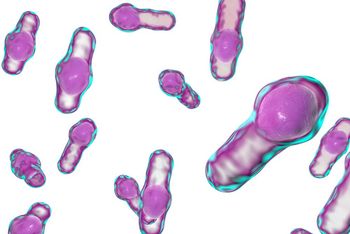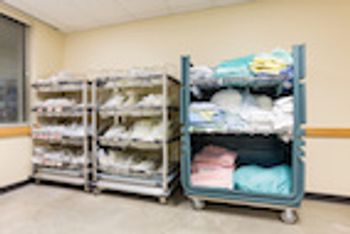
C. Difficile
Latest News
Latest Videos

CME Content
More News

Researchers found the experimental vaccine could potentially inhibit severe diarrhea and pseudomembranous colitis by inducing a functional antibody response that can neutralize the two main disease-causing toxins (toxin A or B) produced by C. difficile.

A new study has provided more evidence to show that certain heartburn medications may make individuals more susceptible to gastrointestinal infections.

A new study takes a look at the efficacy of off-label treatments for Clostridium difficile (C. difficile) infection.

Under a program established through the Affordable Care Act, 769 US hospitals will receive Medicare reimbursement reductions due to the high rates of hospital-acquired infections.

In mid-November, the CDC released the “Core Elements of Outpatient Antibiotic Stewardship.”

A study from University of Washington researchers uncovers how hospital laundry facilities may harbor dangerous Clostridium difficile spores, creating a potential community source for the bacterial pathogen.

Researchers at University of Chicago Medicine have created an antibiotic stewardship training program for internal medicine residents that incorporates social media platforms, offering a technological tool for a growing health problem.

A study using different criteria for urine testing than those outlined by the current Infectious Disease Society of America (IDSA) guidelines, has proven to cut down on the testing of urine samples and inappropriate use of antimicrobials.

Doctors at the Children’s Hospital Colorado have published their research on a new approach to antibiotic stewardship, with promising reductions in antibiotic use and rates of Clostridium difficile.

The US Food and Drug Administration has approved Merck’s Zinplava, a monoclonal antibody that will reduce recurrence of Clostridium difficile in high risk patients.

As hospitals continue to search for new ways to limit their number of patients acquiring Clostridium difficile (C. difficile) infections, a new study shows promise in the use of ultraviolet light technology for ridding patient rooms of highly resistant C. difficile spores.

With the use of antibiotics remaining high and steady in American hospitals and healthcare facilities, new rules on infection prevention and antibiotic use are set to bring changes to thousands of nursing homes, nationwide.

Consumer Reports recently evaluated more than 3,100 hospitals in the United States and found that about a third of them received a low rating for controlling infections from Clostridium difficile.

According to newly published research, high levels of zinc changes microbiota in the gut decreasing resistance to infections from Clostridium difficile.

As so-called “superbug” bacteria continue to develop new ways of resisting antibiotics, scientists are on the search for new and alternative treatments. Promising news from a recent study is now showing that we may be able to battle the most virulent strains of the Clostridium difficile bacteria with a class of drugs already on the market.

When the colistin-resistant gene, mcr-1, was first found in China in 2015, health officials around the world knew that the gene would inevitably appear in their countries. It has since been detected in other parts of Asia, Europe, and North America, including Canada, which just released a 2016 report from their Canadian Antimicrobial Resistance Surveillance System.

The FDA has granted biopharmaceutical company, MGB Biopharma’s lead candidate, MGB-BP-3, Qualified Infectious Disease Product (QIDP) designation for the treatment of Clostridium difficile-associated Diarrhea.

A new study shows that detecting and isolating Clostridium difficile carriers when they are admitted to hospitals can significantly reduce the incidence of new infections from the pathogen.

In the battle against drug-resistant pathogens, genetic research holds promising answers to our toughest threats. A new study shows that the best tool for treating Clostridium difficile infections could be within the genome of the bacteria itself.

As the rise of antibiotic-resistant bacteria leads to higher rates of life-threatening infections from pathogens such Clostridium difficile and methicillin-resistant Staphylococcus aureus (MRSA), researchers are increasingly looking to probiotic treatment as an important part of fighting infections.

A new bacteriophage (phage) treatment-based approach to fighting Clostridium difficile (C. difficile) colonization and infection may one day provide for effective treatment against this potentially lethal disease.

A recent review article on the status of vaccines in development for healthcare associated infections (HAIs) provides both an in-depth discussion of their urgent need, as well as their potential for success.

Clostridium difficile infection (CDI) can be spread between facilities, particularly in older adults. One study has found that collaboration between facilities may help curb the spread of this potentially deadly infection.

Treatment with SER-109 is considered to be effective in treating Clostridium difficile infection.

US hospitals have made significant reductions in the incidence of hospital-acquired infections (HAIs) over the past decade, a new report from the Centers for Disease Control and Prevention (CDC) has revealed.
























































































































































































































































































